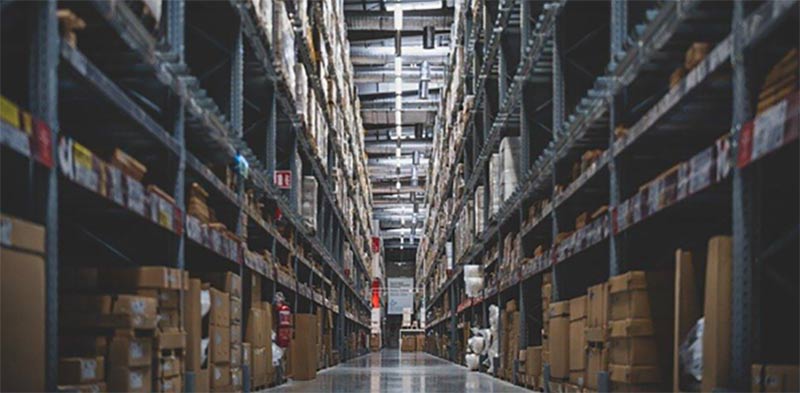Ultimate Guide to Warehouse Health and Safety Regulations in 2022
Warehouses are often very busy and lively environments, which leads to a high risk of hazards in the workplace. To mitigate these risks, it is essential to follow high levels of health and safety at all times. Health and safety regulations are of paramount importance and exist to protect both employees and employers.
Read on for the ultimate guide to warehouse health and safety regulations. This guidance is aimed at anyone who works in or around a warehouse.

What are the main safety hazards in warehouses and how can they be avoided?
- Slips and trips
- Working at height
- Manual handling
- Falling or moving objects
- Vehicles in and around the warehouse
Slips and Trips
Slips and trips are a very serious issue in warehousing and can happen at any time. Whilst some people believe they are just part of the job, they can cause severe injury. To avoid slips and trips, equipment should be properly stored, and if spillages happen or the floor becomes contaminated, it should be cleaned immediately and effectively.
Creating storage facilities for waste and equipment to ensure they are not obstructing any employees will significantly reduce the number of accidents that happen. Additionally, providing good lighting and laying even floor surfaces will help to ensure your warehouse is running as smoothly as possible.
Eliminating the cause of slips and trips can reduce the chances of it happening at all. Issuing the correct footwear and providing anti-slip entrance mats will also control the risk of slipping and tripping.
Working at Height
Health and safety regulations state that any work at height, including maintenance work on contract, must be supervised. It also means you must select the right equipment for the task. It is estimated that around 40% of falls from height accidents in the UK are associated with ladders. If you do have to use a ladder to complete work at height, you must be able to show that it is the most reasonable form of equipment to use.
Some pieces of equipment, such as mobile elevating work platforms (MEWP), require specialist training. Using equipment that you are not familiar with or trained in using will significantly increase your risk of falling from a height. Before you begin a task involving a ladder, inspect it and make sure it is safe to use. At ESE Direct, we sell ladders that include safety cages, eliminating the need to tie-off.
Manual Handling
Incorrect manual handling causes work-related health issues for many in the industry. If you believe there is a risk associated with a manual handling task, then you should try to avoid it. However, if the task cannot be avoided, think of what equipment could help you handle the load safely.
Health and safety regulations state that a manual handling assessment must be carried out for operations and tasks that present some risk of injury. When conducting a manual handling assessment, consider:
- The task
- The load
- The environment
- Your capability
- Any other important factors
If you are an employer, providing manual handling posters around your warehouse can help your employees to stop and think if they are equipped to handle a heavy load. This will ultimately reduce the number of injuries and sick days employees take.
Falling or Moving Objects
Falling objects are one of the biggest hazards within the warehouse industry. It can happen for many reasons, for example, due to incorrectly stored equipment and objects that are frequently moved. If there are areas in your warehouse where objects are moved often, the area should be cordoned off with safety barriers and correctly signed, so it is visible to all employees.
It is also worth investing in lockers that can store PPE, personal belongings, or equipment that isn't regularly used. In turn, this is also likely to reduce trips and slips in the warehouse. These lockers should be designated in a specific area and not awkwardly positioned on an uneven surface or angled in a corner. Storage areas in any warehouse should be clearly marked for all to see.
Vehicles in or around the warehouse
In warehouses, moving vehicles must be managed at all times to reduce hazards and the risk of accidents. Any employee involved in the collection or delivery of items to a warehouse should exchange any important health and safety information.
All drivers or couriers visiting the warehouse should be given information about the location they are driving to. This means ensuring everyone can understand, even those with limited understanding of the English language. Providing pictograms of site rules will help to reduce language barriers and increase safety.
Every warehouse should be designed to reduce the risks of reversing vehicles by using methods such as one-way systems. Where reversing cannot be avoided, CCTV and vehicle sensors can reduce the risk of damage to the vehicle and injury to any pedestrians. Impact protection barriers are an effective solution and can be quickly and easily installed to prevent damage to stock, shelving and racking. Warehouses are also encouraged to have procedures in place to check trailers can be coupled and uncoupled safely without any issues. This is also required for the loading and unloading of vehicles.
The importance of risk assessments
Risk assessments are very important in the warehousing industry and can help you to identify hazards that could potentially damage the function of your warehouse. They can also help you to recognise additional hazards that could harm your staff or your resources.
Risk assessments ensure that both you and your employees are adhering to legal health and safety regulations which, in turn, helps your business run seamlessly. They should form part of your occupational health and safety plan and be made available to all employees. Recognising hazards and learning how to reduce them will not only help to ensure you are adhering to health and safety regulations, it will also increase the smooth running of regular testing and inspections within the warehouse.
At ESE Direct, we like to consider ourselves the experts in products for business. If you're looking for new equipment for your warehouse that complies with all health and safety regulations, shop with us today. You can buy online or call us on 0808 258 1182 for expert advice from one of our friendly advisers.

Author Bio - Debs
Digital marketer, social media, content writer, musician, sloth-lover, tea-drinker.





